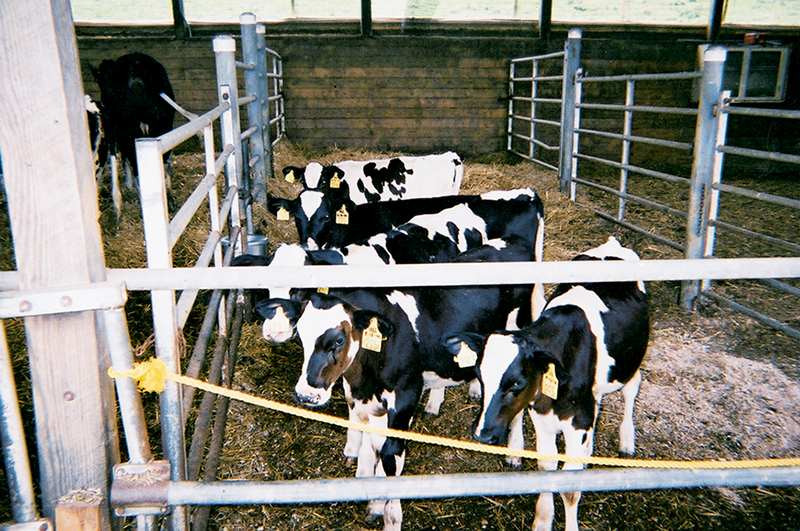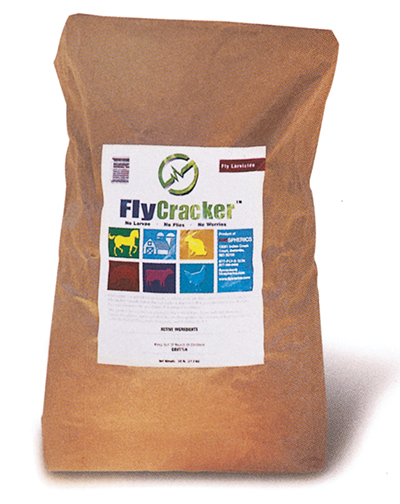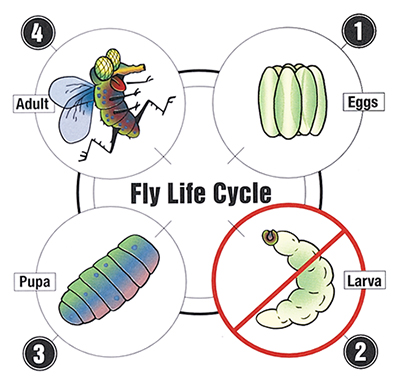
Pest Control on the “Fly”
An accidental discovery that occurred during the 1976 Viking missions to Mars has led to the creation of a new, non-toxic, and environmentally safe pesticide that is wreaking havoc on fly populations at farms, stables, and households across the country. Although new to the commercial market, the 100-percent biodegradable substance appropriately tagged as FlyCracker® has quite a rich history, evolving over several decades.
Dating all the way back to 1959, NASA Headquarters provided research and development support to a company called Biospherics Inc. (now known as Spherix Inc.), under the Agency's planetary science program. In 1969, the Beltsville, Maryland-based biotechnology company's "Labeled Release (LR) Life Detection Experiment" was selected by NASA to fly aboard the Viking 1 and Viking 2 landers, which were both headed to Mars. Dr. Gilbert V. Levin, the current chief executive officer of Spherix and holder of more than 100 patents, was the principal investigator and experimenter for the tests conducted at the Martian landing sites.
The path leading to the development of FlyCracker began when Dr. Levin and his research team carried out the task of producing nutrients to feed hypothetical Martian microbes in the LR microbial life detection test. During the course of developing the nutrients, the researchers synthesized various compounds that would act as candidate nutrients. The syntheses that took place involved the generation of intermediates that were subsequently reacted to form nutrient candidates for microbiological testing. One of the intermediates was produced on a Friday afternoon and left in an open vessel, awaiting the next step in making the candidate nutrient.
According to Dr. Levin, he and the research team returned to the open vessel the following Monday morning, only to find an abundance of dead flies on the floor around it. As it turned out, the Environmental Protection Agency (EPA) happened to be issuing warnings about the dangers linked to the harsh chemical pesticides that were available at the time that Dr. Levin and his team unexpectedly stumbled upon the intermediate and its deadly effect on the flies. The EPA's desire to develop new pesticides that would be safe for the environment and all of its living inhabitants led Dr. Levin to believe that his discovery could result in an alternative solution to the hazardous substances on the market.
With this in mind, Dr. Levin and his company embarked on a small research effort, learning that the initial pesticide effect that killed the flies was produced by a compound that would require substantial testing in order to prove safe under EPA regulation guidelines. The company further experimented with related compounds that were already regarded as safe, and identified one that interrupted the life cycle of the fly, without poisoning the adult insects. Rather, the adult flies' larvae never pupated when exposed to the compound, hence, no adult flies appeared.
This successful achievement led to the conception of Spherix's FlyCracker and an entire new method for using pesticide to treat and control fly problems in closed environments such as milking sheds, cattle barns and hutches, equine stables, swine pens, poultry plants, food-packing plants, and even restaurants, as well as in some outdoor animal husbandry environments. The product can be applied safely in the presence of animals and humans, and was recently permitted for use on organic farms as livestock production aids. According to Spherix, onsite treatment with FlyCracker eliminates labor costs tied to the relocation of animals during facility treatment. Other financial burdens attributed to fly infestations include milk production losses, exceeding $90 million per year, and weight gain depression for cattle, costing cattle feeders more than $100 million annually.
Used in areas that are conducive to fly egg deposition, FlyCracker's carbohydrate technology kills fly larvae within 24 hours. By killing larvae before they reach the adult stages, FlyCracker eradicates another potential breeding population. The Food and Drug Administration-approved product works through a physical process that dehydrates larvae as they ingest the granules in treated decomposing organic matter. Because the process is physical—not chemical—flies and other insects never develop resistance to the treatment, giving way to unlimited use of product, while still keeping the same powerful effect. Furthermore, FlyCracker has been proven effective and safe in multiple studies, including a University of Maryland trial which found that the product reduced the live fly larvae count in 10 pens containing 1-week-old dairy calves from 108 per 6-inch square sample to less than 1 per 6-inch sample. Moreover, no pupae were found in any of the samples, demonstrating complete control in preventing emergence of adult flies.
As sales of FlyCracker continue to climb for Spherix, the company is on the verge of making yet another impact on the commercial market with a revolutionary low-calorie sweetener called Tagatose. The natural sugar—also a result of Dr. Levin's experiment that flew aboard the 1976 Viking missions—is intended for use with food and beverages, but according to Spherix, the main market could be the pharmaceutical industry, where the company plans to use the substance to treat type-2 diabetes, sweeten bad-tasting prescription drugs, and preserve human organs during transplant procedures.
FlyCracker® is a registered trademark of Spherix Inc.

FlyCracker® is environmentally friendly, completely biodegradable, and does not harm animals or humans.

FlyCracker® incorporates a compound that interrupts the life cycle of the fly, without poisoning the adult insects. By killing larvae before they reach the adult stages, the pesticide eradicates another potential breeding population.

The pesticide is easy to apply around the inside perimeter of calf pens, milking sheds, livestock buildings, and other enclosed environments.













